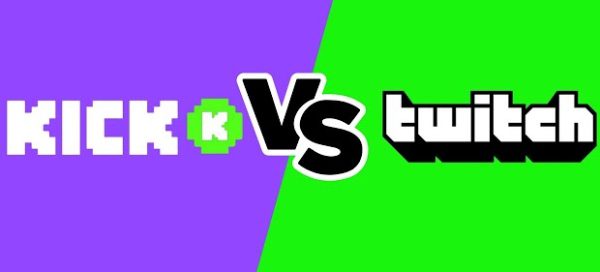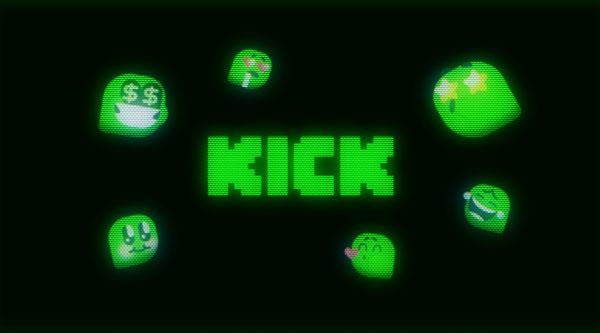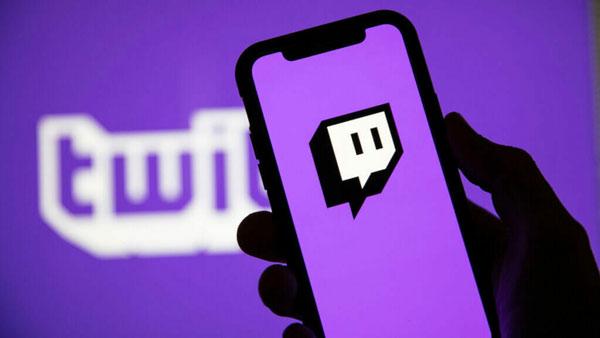Live streaming has expanded significantly throughout the last decade. Originally, folks from a distinct demographic tuned in to watch video games. However, it has evolved into a broader field. Individuals worldwide now go online to perform, interact, or broadcast what they do or what is happening in their lives through live streaming. Unlike pre-recorded videos, Live Streaming makes use of the flow or the feel of interaction that people can provide in real-time. This industry has attracted several major stakeholders but Kick and Twitch are ahead of this trend.
To streamers and viewers, choosing the right platform is incredibly important. Gamers who stream themselves need a platform to attract an audience. They make some money from the stream sessions they provide while viewers expect to get quality content.
Here, we’ll give you the side-by-side of Kick vs Twitch. We will reveal the key differences and highlight the pros & cons. Furthermore, we will suggest the best option between the two.



What is Kick?
Kick is a relatively new platform that joined the live-streaming service in late 2022. It was inspired by the idea of giving streamers more opportunities to build their content. Kick streamers have fewer restraints in contrast with platforms like Twitch. By emphasizing freedom, Kick has become attractive for streamers, especially those who were previously affected by more stringent moderation rules.
The platform is mainly focused on the creation of game-related content and has only later expanded into the IRL (In Real Life) stream. Kick’s main advantage is its tolerance for any topic which content creators are free to use in their videos.



Age restriction of Kick
Kick has specific age limits for most content to be 13+, just like most streaming services. However, the moderation on the platform is not as strict as Twitch. This is concerning for parents as the site targets a younger audience of a more adventurous nature. It offers content that is less controlled and filtered. This is why parents should keep an eye on their child if they use Kick.
Pros and cons of Kick
Pros
- Content freedom: Compared to other similar platforms, streamers are relatively free to air as many types of content as they wish.
- Better revenue split: Kick gives out 95% of subscription revenue share which is more lucrative for streamers.
- Growing community: Kick is not as large as Twitch but it is steadily growing, especially among gamers who do not wish to be heavily policed.
Cons
- Less content moderation: This can potentially make youngsters have access to some stuff that they should not. Parents need to be cautious about this.
- Smaller audience: Kick’s audience is relatively small, so there’s less competition for new people streaming.
- Fewer features: Kick offers fewer features as compared to those that Twitch provides to both streamers and those watching the stream.
What is Twitch?
Twitch is the most famous site for live streaming, especially for games, which was started in the year 2011 and shortly grew to be the favorite streaming platform for many gamers. In recent years, it has evolved and offers a wide variety of content ranging from musical concerts to cooking programs and podcasts.
At present, Twitch has more than 30 million active users who attend the site daily. Its development has been quite meteoric as its audience continues to grow. They turn to it for all kinds of real-time media content. The platform – Twitch is capable of appealing to the masses but at the same time, it did not lose its gaming-oriented focus. This allowed it to remain the leader of the streaming market.



Age restriction of Twitch
Twitch like Kick has an age limit set at 13+. However, it has strict rules and a better control system. It allows parents to put filters in place. These filters control what the child is or isn’t allowed to see. As the content may be of mature theme, it is quite helpful in this aspect.
Pros and cons of Twitch
Pros
- Massive audience: TTwitch enjoys a massive audience which means that the streamers will have access to a larger viewer count and expand their channel.
- Advanced streaming tools: Twitch offers several choices of streaming resources including various overlays and interactive chat elements.
- Variety of content: It’s well renowned for the gaming content alone for the site offers more in categories such as creative pieces, talk shows and more.
- Stronger moderation: Twitch does not allow nudity and has acceptable levels of moderation that are not observed in most other platforms.
Cons
- Revenue split: Twitch limits streamers’ benefits where they receive only 50% of the total revenue received from the subscriptions.
- Strict guidelines: Twitch has strict rules and regulations that may make the streamer feel restrained. If a content creator does not comply with their rules then their content is either pulled down or their account is suspended.
- High competition: Twitch establishes itself with huge traffic which can make it saturated for new streamers seeking fans.
All-round comparison between Kick and Twitch: which is right for you?
Which of the two platforms is better suited for your needs between Kick vs Twitch? Let’s dive further deep on this topic to help you make a solid decision. If you are a parent seeking to control your children’s exposure to content, or a content creator simply looking for a platform, the following comparison will cover some aspects to establish your opinion.
Technical features and tools
Kick
Kick provides minimum streaming features that enable Streamers to share their content in live stream and communicate with their respective audience. It includes stuff like stream overlays, plugins, and service integration. If you require a more refined and professional stream experience then Kick is probably not appropriate for you.
Twitch
Twitch has a large number of streaming tools available. It includes stream overlay and direct or third-party application integration etc. It provides streamers with everything they need to make their broadcasts look the part. It’s overlays have always been smooth when it comes to streaming software, thanks to the support it grants to programs such as OBS.
User experience
Kick
Kick’s design is simple and unpretentious, which indeed has some merit but appears somewhat clumsy. The platform is still evolving and although all the fundamentals are in this app, some may feel it is rather lackluster. While users themselves can find their way around the site with relative ease, content discovery is not quite as smooth as it is on Twitch. The video quality also depends on the setup of the respective streamer.
Twitch
Twitch has been in the game much longer and this is why its resources are much more sophisticated. The user interface is sleek and user-friendly. It allows audiences to easily navigate toward new products. Quality is generally impeccable when it comes to videos, and most of the time Twitch can handle high numbers of people streaming. The audience also gets to access features such as the use of chat emotes, therefore, enhancing their experience of the community.
Content variety
Kick
Kick operates mainly in the gaming sphere, although it has been gradually diversifying. Even though both platforms share many similarities, Kick’s more laid-back moderation policy has granted more freedom to content creators. This freedom results in a wider range of content.
Twitch
Apart from the games, there are streams related to musical performances, art making, and even programs with hosted content. This diversification makes Twitch attractive to more people since everyone will find something that interests them.
Community and engagement
Kick
Kick’s community is relatively small at the moment but they are still growing at a steady pace. Because the site has a smaller viewership, it takes longer to accumulate a large number of followers.
Twitch
One cannot help but notice that Twitch is fantastic at growing communities. Twitch chat emotes, and raids, which are general engagement-related tools assist in forming a very tight-knit community. Immersiveness is created for viewers since the audience has to stick around and interact in the chat to watch the streamer play the game.
Monetization
Kick
Kick has one of the most appealing revenue models for streamers as it grants 95% of the revenue from subscriptions to them. This is an attractive factor for new streamers who seek to make a good amount of money on their streams.
Twitch
Twitch provides 50% of revenues from subscriptions which is significantly lower than Kick’s share. But it provides other forms of access to the monetary stream such as advertisement revenue, donations and sponsorship. Twitch users can also be affiliates or partners and get even more opportunities when the channel is more popular.
Content policies
Kick
Kick’s more laid-back content policies are beneficial, however, it also means that chores can be seen. Some of the material that would easily get banned or deleted on Twitch or other spaces may still be available on Kick. This means Kick may not be a safe space for younger consumers of media content.
Twitch
Twitch maintains a strong code of policies. Any post which is regarded as violating its guidelines, for instance, nudity, and the use of excessive abusive language will be deleted. The violator is either suspended or banned.
Kick vs Twitch: how do they protect users’ safety and privacy?
Most parents and streamers worry about the safety and privacy of their families and themselves. Here’s Kick vs Twitch – how these platforms compare:
- Kick: Kick is new in terms of the safety of its users. Unfortunately, as we have seen, the platform lacks most security means. Kick’s communities can be potentially at a higher risk here due to this lack of moderation.
- Twitch: Twitch offers better user protection to its viewers. It offers a wide range of tools for blocking, reporting, and moderating chat to ease the work for streamers who have to engage with their communities. It also maintains privacy and people’s data to ensure they do not end up in the wrong hands.
Kick vs Twitch: do Kick and Twitch have parental control?
Kick: Unfortunately Kick doesn’t offer extensive methods of parental control. Parents will need to supervise their children when they use this platform due to its poor moderation.
Twitch: It has better parental controls. Parents can easily censor mature content and regulate who their kids talk to on this platform.
Bonus for parents: how to know if your kids use live-streaming apps?
While platforms like Kick and Twitch could be entertaining, their entertainment tends to come with exposure of the children to bad images or costly interactions online. As such, it might be wise to download other applications for monitoring such as FlashGet Kids.



Features of FlashGet Kids:
- Live monitoring: Real-time monitoring of a kid’s mobile devices lets you see everything you need about their social life.
- Screen mirroring: Captures everything presented on your child’s device.
- Screen time controls: Regulate how long your child indulges in live-streaming.
- Activity alerts: Parents can be alerted of their kid’s activities online.
- Control interactions: Control who your child is talking to and block any unwanted interactions using the App blocker.
Final words
Kick vs Twitch can be a fun debate. While Kick currently has less audience and fewer overall monetization opportunities, Kick presents more choices in content creation and a more lucrative business plan. On the other hand, Twitch includes many options for moderation and parental control. Spending time on Twitch will be safer for the younger audience. In the end, it’s up to you. You can either decide to go for the platform that offers you growth and the ability to post unfiltered content or you can opt to stay safe even if the platform doesn’t offer you a big slice of the pie.
FAQs
Is streaming on Twitch or Kick better?
If the streamer in question is already popular on Twitch then he can make it on Kick as well. Twitch boasts a massive audience whereas Kick offers better monetization margins and laid-back content rules. Both platforms have their own respective pros and cons.
Why is Kick so controversial?
Kick has less control over content. This makes it undesirable for parents as their kids can be potentially exposed to explicit or other harmful material. This makes the platform controversial because it allows more freedom with fewer repercussions.
Twitch vs Kick: Who pays more?
Twitch has a huge captivated audience as compared to Kick. Millions of viewers tune in daily to watch their favorite streamers. However, Kick provides increased subscription revenue at 95% as compared to Twitch streamer’s 50%.

